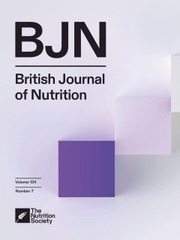Dear editor
Christian Saleh and Hrvoje Budincevic question the usefulness of carotid intima medial thickness (cIMT) as a surrogate marker of atherosclerosis in children(Reference Sasidharan Pillai, Vijayakumar and Balakrishnan1). cIMT is an acknowledged surrogate biomarker of atherosclerosis by the American society of echocardiography as well as the association for European pediatric cardiology that gives remarkable information on vascular health in the paediatric population when other markers may not yet reflect vascular alterations(Reference Drole Torkar, Plesnik and Groselj2).
Christian Saleh and Hrvoje Budincevic argue that common carotid IMT below a certain degree does not represent local atherosclerosis but merely reflects an adaptive response to altered flow, shear stress and pressure. We agree that during childhood, mild degrees of intima-media thickening reflect a compensatory adaptation of intimal and medial layers to pressure and flow in the absence of atherosclerotic lesions. Physiological increase in cIMT is seen in children in association with age, growth, male gender, pubertal staging, ethnicity and geographical factors. However, cIMT increase beyond a certain level represents vascular remodelling in response to known atherosclerosis risk factors, and cIMT can be partially reduced by modifying those risk factors. The cellular and molecular alterations that underlie intimal-medial thickening have been implicated in the development, progression or both of atherosclerosis. Considerable weight loss associated with a reduction in IMT demonstrates the reversibility of this early atherogenic vascular damage and advocates a link between cardiovascular risk factors and cIMT as previously depicted in cross-sectional analyses of children with obesity(Reference Drole Torkar, Plesnik and Groselj2–Reference Stein, Korcarz and Hurst6).
Christian Saleh and Hrvoje Budincevic mention that compared with other large arteries, atherosclerosis of the common carotid artery tends to develop relatively late in life and IMT of the common carotid artery is unlikely to represent local atherosclerosis. Though cardiovascular events are uncommon in the paediatric population, alterations of the cardiovascular system can be recognised at an early age in children. Atherogenesis starts during childhood, accelerated by modifiable risk factors such as obesity, hypertension, hyperlipidaemia and hyperglycaemia. Atherogenesis begins in the iliac arteries and abdominal aorta during childhood and is later seen in higher regions of the arterial tree. However, high-resolution vascular ultrasound as a reliable screening method has demonstrated increased cIMT in children with cardiovascular risk factors, such as obesity, hypertension and chronic kidney disease(Reference Moretti, Korban and Alchourron5,Reference Doyon, Kracht and Bayazit7,Reference Dalla Pozza, Ehringer-Schetitska and Fritsch8) . Prior studies suggest preclinical measures of atherosclerosis in the aorta could advance the assessment of preclinical atherosclerosis in paediatric studies as an addition to cIMT(Reference van der Linden, Roodenburg and Nijhof9). With the recent global epidemic of childhood obesity along with the corresponding increase in type 2 diabetes even in younger children, it is not surprising to see increased cIMT in younger children. The majority of studies reporting the association of risk factors with cIMT in children have been on children ≥ 8 years. Future scientific investigations are warranted to better understand the age of onset and progression of cIMT that reflect preclinical atherosclerosis in paediatric population given the changing face of obesity and type 2 diabetes in younger children.
Another concern raised by Christian Saleh and Hrvoje Budincevic is that the partial interrogation of the carotid artery (only the common carotid artery) would lead unavoidably to inaccurate reflection of the atherosclerotic burden in the investigated subjects. A consensus statement from the American society of echocardiography cIMT task force, endorsed by the society for vascular medicine recommends limiting cIMT measurements to the far wall of the common carotid artery(Reference Stein, Korcarz and Hurst6). This is considered the standardised measurement point for most studies in both adults and children. Regarding the cIMT measurement in our study, it was obtained according to the Mannheim cIMT consensus by the same radiologist in the end-diastolic phase(Reference Sasidharan Pillai, Vijayakumar and Balakrishnan1,Reference Touboul, Hennerici and Meairs10) .
Finally, current data suggest that cIMT measurement offers valuable information about the cardiovascular risk when performed under standardised scanning settings and protocols. Given the progression of vascular changes throughout life, it seems advisable to detect subclinical signs of arterial damage and atherosclerosis very early, especially in children with elevated cardiovascular risk factors and improve atherosclerotic burden by preventive measures.
Acknowledgements
No financial support.
There are no conflicts of interest.



